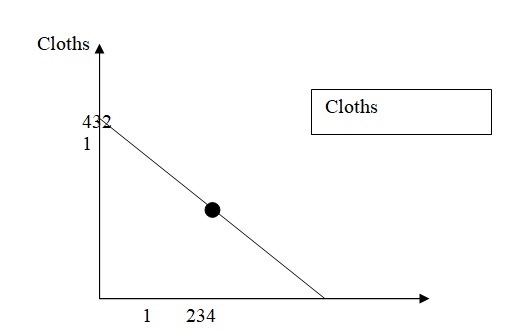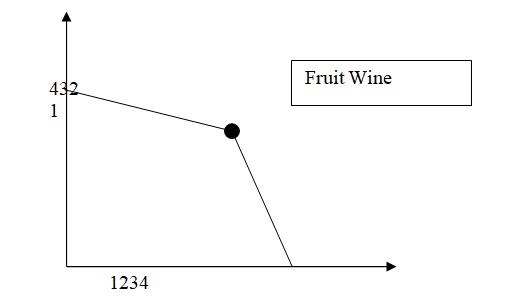The theory of comparative advantage is the most important concept in international trade and has been one of the major reasons behind the existence of WTO and its worldwide success. The theory in the context of international trade explains the benefits of trade between two countries without any barrier even if one is more efficient at producing goods or services needed and produced by the other (Dixit, Avinash & Norman, 1980). The comparative advantage suggests that even in case of a country lacking the absolute advantage of specialization in any good it can produce and trade with other nations, it still has the option of specializing in production and export of those products with which it has a somewhat relative advantage (Leamer & Levinsohn, 1995).
The terms like comparative or relative advantages have often failed to create the same impression as that of absolute advantage and hence this concept of comparative advantage has often been misunderstood. The concept of absolute advantage as described by Adam Smith suggests that a commodity produced cheaper by a foreign nation should rather be bought from that nation and the resources available should be employed in a way in which we have some advantage (Bromley et al., 2004, p. 46). This simplicity of absolute advantage has made the concept very popular and easy to comprehend. Moving on to the concept of a comparative advantage given by David Ricardo; the concept is not at all intuitive at first go and will require explicit numerical examples for better explanation.
To begin, we consider two nations “Nation A” and “Nation B” and both producing two goods, cloth which is a manufactured good, and fruit wine which can be considered as an agricultural product. Both the products are produced in these countries. As Ricardo had assumed, we start with Nation A which can produce fruit wine efficiently while Nation B is considered more productive and can produce both cloth and fruit wine efficiently. The main purpose with which the theory of comparative advantage was developed by Ricardo was to identify a country’s comparative advantage.
It requires a comparison of production costs across countries (Bromley et al., 2004, p. 50). The main factor which plays the role in this case is not just the cost of production or the cost of resources but the opportunity costs of producing goods across countries. A country is said to have a comparative advantage in the production of cloth if it can produce it at a lower opportunity cost (Deardorff, 1980, 941-57). The opportunity cost in the given business scenario of cloth production is the amount of wine that must be given up to produce for producing a unit of cloth. If Nation A is in comparative advantage in the production of cloths then the fruit wine production it is giving up to produce another unit of cloth is less than that of Nation B.
The theory of comparative advantage when applied to a modern business scenario, we consider two countries producing two goods using labor as the only factor of production. Here the goods have been considered as a homogeneous output and at the same time, labor is also a homogeneous entity within the same nation. But the same labor is heterogeneous across different countries (Crawcour, 1997, pp. 8-24). Other factors like goods transportation between countries and labor relocation within the country are all been considered costless. Relocation of labor across countries is not possible. Labor is fully employed and it’s the labor productivity parameters according to which production technology is being reflected (Bromley et al., 2004, p. 56). The business model based on this theory gives an overview of what exactly will happen when a country moves from a state of the economic island to free trade to the other country. The main things which require care are trade’s effects on the prices of the goods in each country, the production levels of the goods, employment levels in each of the nations involved, the trade pattern, consumption level, and national as well as individual welfare.
The liberated trade and comparative advantage in production mean the nation at the advantageous position with a product will get a better price in the other nation. So the firms will get more profits if they sell their product in other countries. The higher price received for each country’s comparative advantage would finally make way for each of those nations to specialize in that good. The labor from the comparative disadvantaged industry moves into the comparative advantage industry. So in the long run, comparative disadvantageous industries will go out of business. The movement of free trade will generate an improved welfare system and also increase the overall consumption of goods. So more consumption will finally lead to more production thereby rising the real wages and income of individual workers and also every worker can now consume more of both goods. So everybody gets benefited from free trade in both countries A and B (Williamson, 1999).
The theory of comparative advantage also known as a Ricardian model can better be explained through a numerical example. The example given by Ricardo demonstrated that both countries A and B will gain from trade if they specialize in their comparative advantage good and trade a part of their produce for the other good from the other nation. To begin with, we look into the production of cloths and fruit wine in both nations A and B. The production functions over here are national productions.
Production of Cloths
where
Q C = quantity of cloths produced in the nation A and Q C for nation B.
LC = amount of labor applied to cloths production in the nation A and LCfor nation B.
a LC = unit-labor requirement in cloths production in nation A and a LC for nation B.
Production of fruit Wine
where
Q w = quantity of cloths produced in the nation A and Q w for nation B.
L w = amount of labor applied to cloths production in the nation A and L w for nation B.
a Lw = unit-labor requirement in cloths production in nation A and a Lw for nation B.
Now according to the definition, a country has a comparative advantage over others in the production of a good if it can produce that particular good at a lower opportunity cost relative to another one.

This means that nation A must give up less fruit wine to produce another sheet of cloth than nation B.

This means that nation B can produce fruit wine at a lower opportunity cost than nation A. This also means that if one nation has a comparative advantage in the production of one product then the other nation has a comparative advantage in the other goods. But in case of none of the nations having any comparative advantage,

But getting this outcome is an unlikely occurrence.
Now we are taking an example in which details of input requirements of countries A and B have been taken.
For country A
Resources
For country B
Resources
The details are given above clearly show that country has an absolute advantage in the production of both fruit wine and clothes.
Now we are looking into the condition when Country A is producing 3 units of each commodity while country B is producing 2 units of each commodity.
Cloths Comparative Advantage


Now to check out which country has comparative advantage and in which good, we have to calculate their respective opportunity costs.
Country A’s opportunity cost of fruit wine is 3 ft of cloths per lb of fruit wine. Also, country A’s opportunity cost of cloths is 3 lb of fruit wine per ft of cloth.
Similarly, Country B’s opportunity cost of fruit wine is 1 ft of cloth per lb of fruit wine. Also, country B’s opportunity cost of cloths is 1 lb of fruit wine per ft of cloth.
So it is very much clear country A has an absolute advantage in the production of both goods, country B has a comparative advantage in the production of both fruit wine and cloths.
References
Crawcour, E. Sydney. “Economic Change in the Nineteenth Century.” In The Economic Emergence of Modern Japan, edited by Kozo Yamamura. Cambridge: Cambridge University Press, 1997.
Deardorff, Alan V. “The General Validity of the Law of Comparative Advantage.” Journal of Political Economy 88 (1980): 941-57.
Deardorff, Alan V. “Testing Trade Theories and Predicting Trade Flows.” In Handbook of International Economics, volume 1, edited by Ronald W. Jones and Peter B. Kenen. Amsterdam: North Holland, 1984.
Deardorff, Alan V. “Exploring the Limits of Comparative Advantage,” Weltwirtschaftliches Archiv 130 (1994): 1-19.
Dixit, Avinash K.and Victor Norman. Theory of International Trade. Cambridge: Cambridge University Press, 1980.
Leamer, Edward E. and James Levinsohn. “International Trade Theory: The Evidence.” In Handbook of International Economics, volume 3, edited by Gene M. Grossman and Kenneth Rogoff. Amsterdam, North Holland, 1995.
Bromley, S., Mackintosh, M., Brown, W. & Wuyts, M. Making the International: Economic Interdependence and political Order. Pluto Press, 2004.
Williamson, Jeffrey. “The Impact of Globalization on Pre-Industrial, Technologically Quiescent Economies: Real Wages, Relative Factor Prices, and Commodity Convergence in the Third World Before 1940,” Working Paper no. 7146, Cambridge, Mass.: NBER, 1999.




